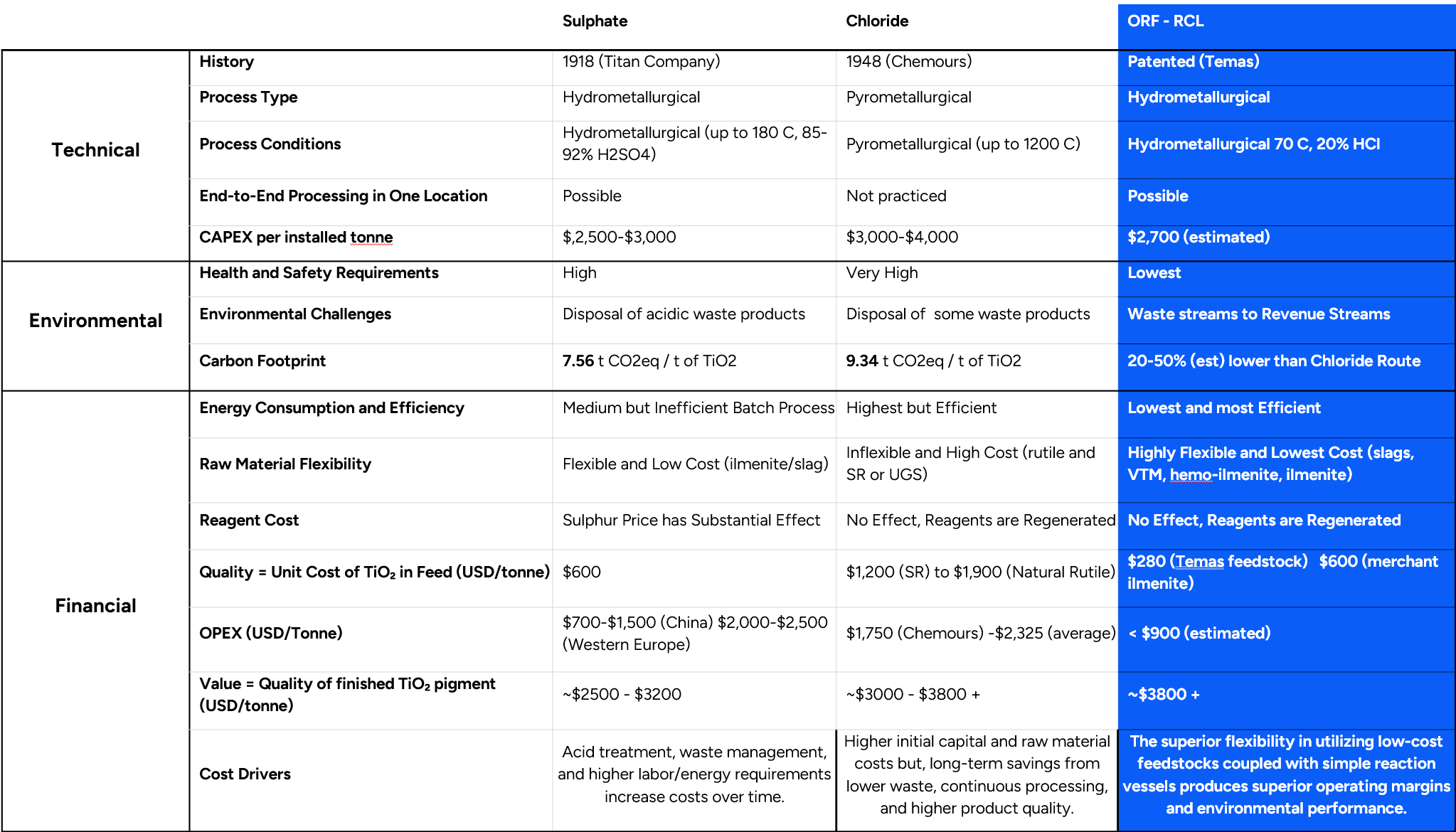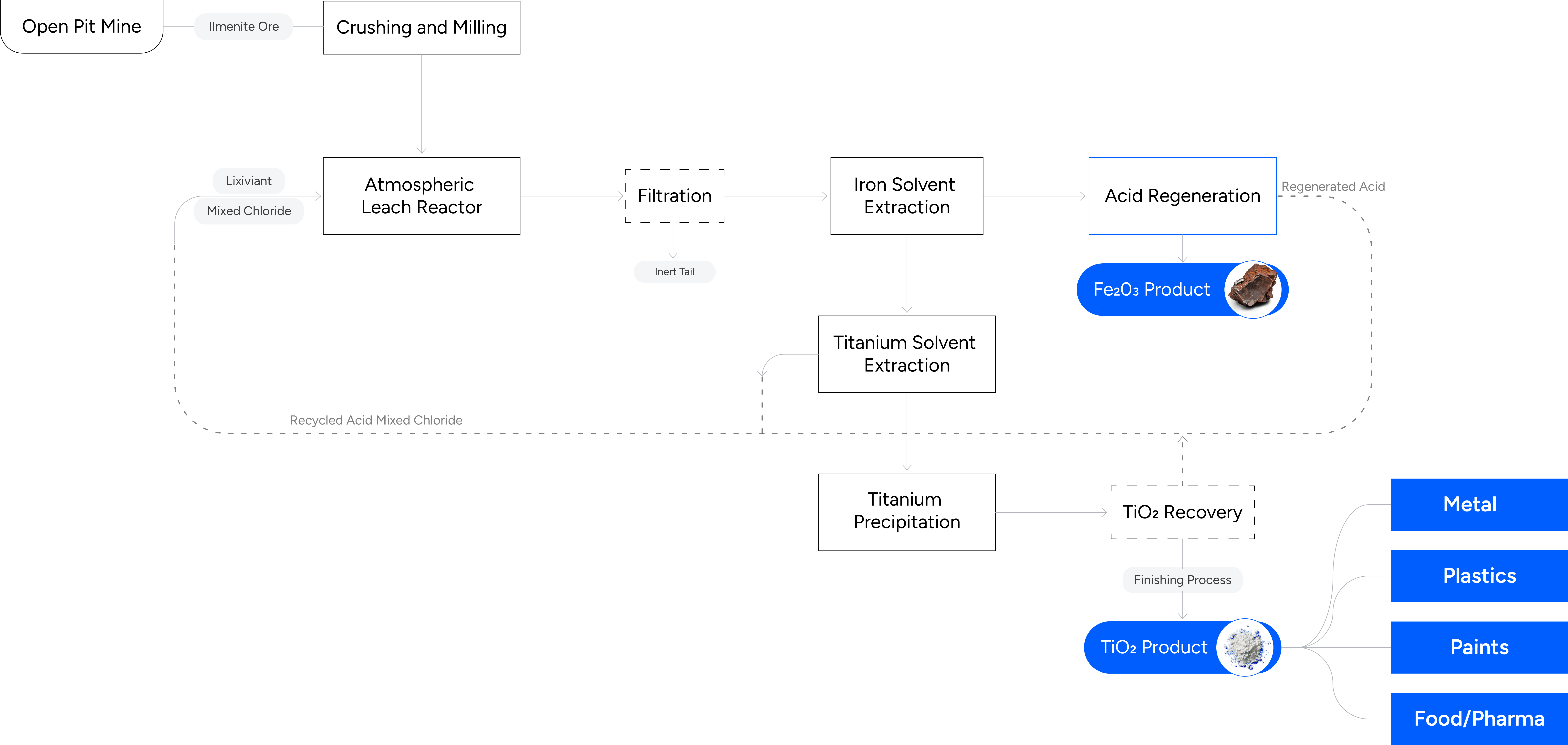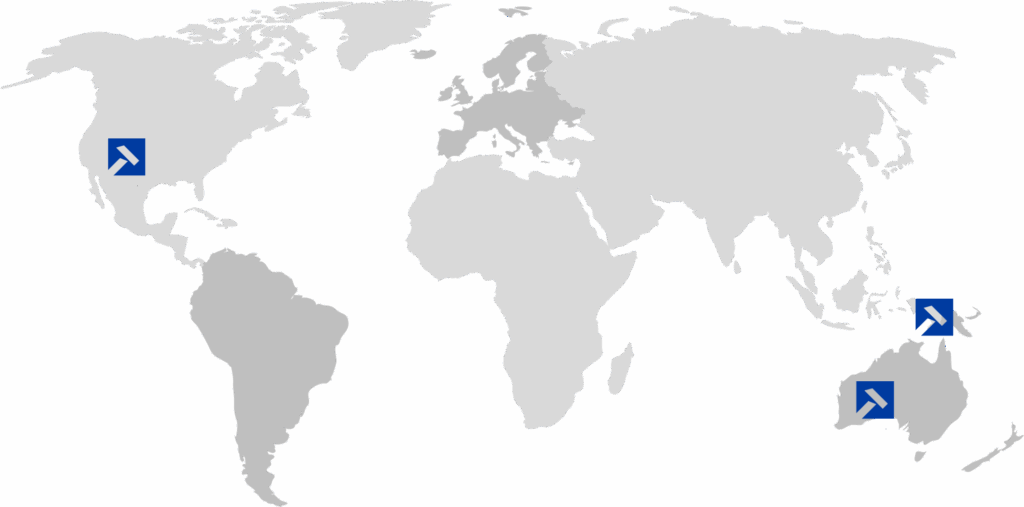Temas’ portfolio of patents focuses on hydrometallurgical extraction from concentrates, whole ores, slags, and tailings, significantly enhancing recovery of critical metals, battery metals, PGMs, precious and base metals, and REEs. The patented RCL process achieves materially higher through-yields and substantially lower capital and operating costs compared to traditional methods, ideally suited for treating increasingly complex ores.
The Genesis of the Regenerative Chloride Leach Suite of Solutions

Process Research ORTECH Inc. was formed in January 1999 under a privatization plan of the Ontario / Canadian Government.
Building on the past 70 years of metallurgical R&D, ORF Technologies Inc. (ORF) was spun out as a separate business entity to commercialize this novel metallurgical IP.
Temas acquired 50% of ORF on April 13, 2021, and recently announced the plan to acquire the remaining 50% ownership of this entity.
ORF holds 11 novel process patents that are regarded as PLATFORM metallurgical patents.
This family of platform processing patent technologies is called Regenerative Chloride Leach (RCL) by Temas.
All patents share the same metallurgical philosophy that utilizes a mixed chloride media to increase H+ activity and lower the activation energy of dissolution of oxide minerals.
This results in OPEX cost savings via:
Keys to the economic and environmental superiority of this approach include:
The Company’s portfolio of patents are all related to hydrometallurgical mineral extraction of concentrates, whole ores, slags and tailings to enhance recovery of critical metals, battery metals, PGMs, precious and base metals and REE recovery at materially higher through-yields and lower capital and operating costs than many of the conventional approaches that are in use traditionally. RCL is ideally treating increasingly complex ores
The significant cost reduction it will be of over 65% validated for TiO2 processing is a result of the ORF platform’s efficiency (e.g., reagent recycling, potentially lower energy use, optimized recovery). These fundamental process efficiencies are expected to translate into economic advantages when applying the platform to Nickel or other target minerals hosted in complex ores.
The closed-loop design and high reagent recycling rates (>95%) are core to the RCL platform, irrespective of the target mineral. This means the reduced environmental footprint and enhanced ESG profile are benefits that extend to Nickel, Gold, or REE extraction, not just TiO2.
Just as we’ve demonstrated high-quality, 99.8% TiO2 product from pilot testing, the RCL platform is engineered for high recovery and purity of all target metals. Our metallurgical expertise focuses on optimizing these recoveries and maximizing margins for each specific mineral.
A University of Minnesota study on ORF Technologies’ patents concluded that the TiO₂ recovery process could slash production costs by ~ 50-60%, and the process is also less energy-intensive compared to the industry standard.
The global market for TiO₂, valued at US$21.23 billion, is anticipated to grow at a compound annual growth rate of 6.2% through 2032, signifying a substantial opportunity for ORF Technologies’ efficient recovery process.
ORF Technologies’ patented process can produce high-quality Titanium Dioxide (TiO₂) from low-grade materials and is applicable to all ilmenite ores, including those rich in Chromium (Cr), Cobalt (Co), and Vanadium (V), thus enabling the extraction of additional value from elements that are typically not recoverable with other methods.


This multi-mineral capability allows Temas to diversify beyond a single commodity, opening up revenue streams from Nickel, precious and platinum group metals, REEs or other critical minerals as market conditions and strategic opportunities dictate.
Flexibility in who we are available to partner with further diversifies potential revenue streams leveraged from the IP while effectively managing the risks.
For polymetallic deposits, RCL offers the potential to extract multiple valuable metals from a single feedstock, significantly enhancing project economics.
As a licensable technology, RCLs proven adaptability to various minerals, including those listed in our IP like Nickel, dramatically widens its market appeal to miners globally who are looking for innovative solutions for their specific resources.
Temas is actively pursuing global licensing opportunities, with third-party companies currently evaluating Temas IP for potential operations in Indonesia, Australia, and North America.

| Target Elements |
Title |
Country |
Serial No. |
Patent # |
Expiration |
|---|---|---|---|---|---|
| Au, Ag, Pb, Zn, PGE |
Chloride process for the leaching of gold |
Canada |
2869158 |
2869158 |
4/8/2033 |
| USA |
13/858,147 |
9,732,398 |
02/14/2036 |
||
| Ni, Co, Fe, Mg, Cu, Au, Ag, Pt, Pd |
Recovery of nickel in leaching of laterite ores |
USA |
14/225639 |
10,053,750 B2 |
1/30/2035 |
| Canada |
2908082 |
|
3/20/2034 |
||
| |
|
|
|
||
| Fe |
Separation of iron from value metals in leaching of laterite ores |
Canada |
2859035 |
2859035 |
12/10/2032 |
| USA |
13/71,874 |
8,916,116 B2 |
12/12/2034 |
||
| India |
3794/DEL/2012 |
|
12/11/2032 |
||
| Ti, Mg, V, Cr, Ni, Sc |
Process for the separation of iron in extraction of titanium in mixed chloride media |
USA |
14/649,904 |
10,041,141 |
2/4/2035 |
| Canada |
2891360 |
WO2014/085903 |
11/29/2033 |
||
| |
|
|
|
||
| REE, Nb, Y, Zr, U, Th |
Process for extraction of rare earth elements |
Canada |
2869251 |
2869251 |
4/8/2033 |
| India |
1918/MUMNP/2014 |
PT098472IN |
4/13/2033 |
In 2022, Temas conducted a 830Kg Pilot Study to test the RCL process on La Blache VTM feedstock; after optimization produced 88kg of TiO2 at a 99.8% purity. This study followed up on a previous 2017 Pilot Study conducted by the University of Minnesota that produced a commercial grade pigment.
1.59.2% lower cost than the industry leading Chemours (Formerly DuPont) (after applying a credit for the recovered iron oxide)
2.69.7% lower cost than the estimated industry average cost (after applying a credit for the recovered iron oxide)
The merits of the RCL Technologies and commercial adoption success are based on the potential for major operating and capital cost savings.
RCL is less energy-intensive than the industry standard and can create high quality TiO2 from low grade materials.
In addition, the RCL Platform offers other significant operational and environmental benefits. This includes more environmentally friendly leaching technologies and a reduction in carbon footprint when compared to conventional processing methods.
The RCL Platform can produce high value metal product on-site and greatly enhance the mine gate economics compared to conventional concentrators.
Temas believes that RCL represents the lowest cost processing alternative for specialty, strategic and rare earth metals producers.